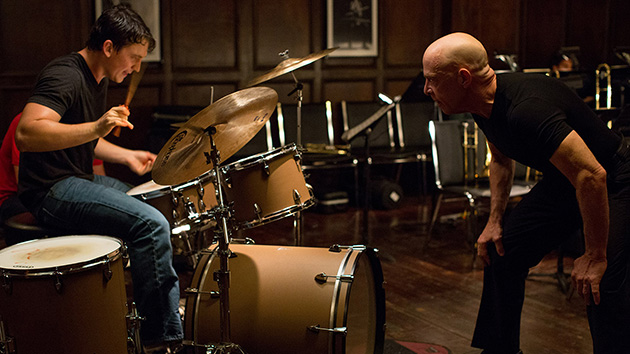Shooting ARRI Alexa Film-Style, with No Color-Correction On Set, on a Compressed Schedule
Last year, writer-director Damien Chazelle’s short film “Whiplash,” a drama about the relationship between a young jazz drummer and his intimidating music teacher, won the shorts competition at the Sundance Film Festival. Based on that success, Chazelle, along with producers Jason Reitman and Jason Blum, decided to expand the film to feature length. The finished product won both the Grand Jury Prize and the Audience Award at Sundance 2014, and Sony Classics plans to release the film later this year.
Whiplash is a success story on a relatively modest budget ($3 million) and compressed production schedule. With the Sundance deadline looming, the film was shot in Los Angeles’s Echo Park neighborhood in just three weeks, followed by eight weeks of post.
Bling Digital, the workflow and post-production division of The SIM Group, designed the production workflow and processed dailies. The company set up one of its P.O.D. (short for post on demand) mobile laboratory systems in the downtown L.A. production offices for offloading camera media, creating hard-drive and LTO backups, and producing dailies for review and editorial.
Bling Digital has developed digital workflows for projects including TV series (such as NBC’s Revolution and Sundance Channel’s Rectify) and the high-profile 2013 feature Pacific Rim, but Whiplash is its first independent film project. “Because indie films have limited budgets, they often receive scaled-back dailies services from rental houses,” says Bling Digital VP Gavin Barclay. “They get a cart, but then they are left to their own devices. Our approach is to give them the same level of support that we provide to TV series and studio films.” That means Bling handles the planning of an appropriate workflow for the project and trains production personnel on the technology involved.
For Whiplash, Bling worked with cinematographer Sharone Meir on a custom workflow. Meir planned to shoot with the ARRI Alexa, recording ProRes 2K, and wanted to avoid any color processing on the set. “Sharone likes to work film-style,” explains Bling Digital Workflow Producer Jesse Korosi. “He didn’t want someone tied to the camera doing live grading; he preferred to rely on his light meter. Eliminating on-set grading streamlined the process and allowed him to move faster.”
Before shooting began, Meir created several LUTs, each a slight variation on Rec. 709, for use in the camera and dailies processing. Meanwhile, Bling engineers calibrated the monitor Meir planned to use on the set with monitors for the digital lab and for finishing. “Once we knew that all of the monitors matched, we could talk about color,” Korosi recalls. “During prep, Sharone was in and out of our lab a few times, looking at color charts and telling us how he wanted the show to look.” Once production began, Meir was comfortable enough with the initial groundwork to communicate with the colorist only via phone and text messages. At the dailies processing phase, small adjustments were made to the LUTs, based on Meir’s notes.
The P.O.D. system set up in the production offices consisted of two Mac towers running DaVinci Resolve and Colorfront dailies processing software. Camera cards arrived from the set several times each day for downloading. Lab technicians prepared five sets of back-ups: one to an internal hard drive, two to RAID-5, and two to LTO. Dailies were colored, synced and processed for next-day delivery to editorial.
“We created a database of every file that was recorded on set,” notes Korosi. “It included all the metadata columns associated with those files. It also listed the hard drive and the LTO tape that each file was recorded to. Any notes that the sound guy made were in the database; any notes that the lab made went into the database.”
Phillip Dawe, head of post-production for Blumhouse Productions, says Bling’s workflow helped the production keep pace with its delivery schedule without making mistakes, and while allowing Chazelle and Meir to work the way they preferred. “We had a daunting task,” he says. “Damien had to show an assembled cut to the producers a couple of weeks after production wrapped, so it was imperative to get media to the editorial team as fast as possible.”
Bling Digital’s key contribution was removing much of the workflow burden from the production team to allow that kind of efficiency. “We made sure that all of the kinks were worked out before the gear landed in a tech’s lap,” Barclay says. “That’s where we feel we can provide a benefit in the independent feature world.”
Crafts: Post/Finishing Shooting
Sections: Technology
Topics: arri alexa bling digital indie film Sundance whiplash
Did you enjoy this article? Sign up to receive the StudioDaily Fix eletter containing the latest stories, including news, videos, interviews, reviews and more.










Leave a Reply